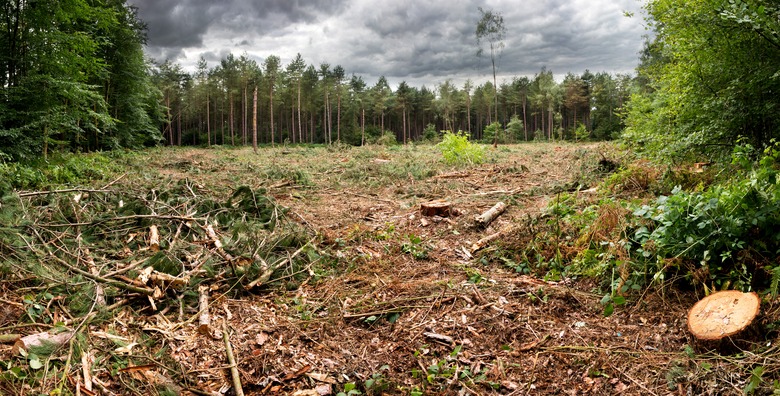The Disadvantages Of Deforestation
Deforestation occurs when forest land is cleared, usually to harvest the timber or clear space for agricultural operations. More than 25 percent of the land on Earth is covered by forests, but millions of hectares of this ecosystem are destroyed every year, according to the University of Michigan. Over half of the world's forests are found in just seven countries: Brazil, Canada, China, the Democratic Republic of Congo, Indonesia, Russia, and the United States. Therefore, while the disadvantages of deforestation are global, the decision to clear forest land belongs to only a handful of governments.
TL;DR (Too Long; Didn't Read)
The disadvantages to deforestation are an increased amount of carbon dioxide emissions and soil erosion as well as the destruction of forest habitat and the loss of biological diversity of both plants and animals.
Carbon Dioxide Emission
Carbon Dioxide Emission
During photosynthesis, trees and other plants remove carbon dioxide from the atmosphere, convert it into sugar molecules, and release oxygen. Carbon dioxide is a greenhouse gas that contributes to global warming. Forests remove carbon dioxide from the atmosphere and help mitigate the greenhouse effect. When trees are cut down, the carbon dioxide they previously absorbed and stored is released back into the atmosphere. According to the U.S. Environmental Protection Agency, 17 percent of the carbon dioxide released into the atmosphere is due to deforestation and the decay of trees and other biomass.
Soil Erosion
Soil Erosion
The roots of plants anchor soil to the ground. When deforestation occurs, topsoil erosion increases because there are no roots to hold the soil in place, and no vegetation to break the force of falling rain. According to the World Wildlife Fund, half of the world's topsoil has eroded away within the past 150 years. Erosion washes soil into nearby waterways, where the increased sedimentation and pollution damages marine habitats and affects local populations that fish or drink from the water source. Additionally, the erosion of topsoil decreases soil fertility and hurts the very agricultural efforts that are often the impetus for deforestation. In the Amazon rainforest, pasture and cropland dominate the clearcut sections of forest. Sedimentary runoff from deforested areas contaminates rivers, affecting everyone who uses that water.
Habitat Destruction
Habitat Destruction
Deforestation fractures forest habitat. Animals use trees for food, shelter, and nesting sites. Without trees, animals must find other places to survive or they will perish. Animal populations suffer dramatic losses when their natural habitat is altered. In tropical rainforests, where species diversity is highest, habitat fragmentation and loss can have significant effects on animal populations. For example, deforestation threatens the habitats of the howler monkey in the Amazon rainforest and the northern spotted owl in the Pacific Northwest region of the United States.
Loss of Biological Diversity
Loss of Biological Diversity
Forests provide homes for numerous animal species, but they are also home to countless plant species. Scientists at the University of Michigan estimate that only one percent of the plant species in tropical rainforests have been screened for potential medicinal use. Of the small percentage of plants that have been studied, several have proven to have medicinal benefits. For example, medicine made from a species of wild periwinkle growing in Madagascar's forests is now being used to treat patients with leukemia and other forms of cancer. Deforestation threatens future scientific discoveries of species that could be useful to mankind.
Cite This Article
MLA
Cairoli, Sarah. "The Disadvantages Of Deforestation" sciencing.com, https://www.sciencing.com/disadvantages-deforestation-8153/. 9 May 2018.
APA
Cairoli, Sarah. (2018, May 9). The Disadvantages Of Deforestation. sciencing.com. Retrieved from https://www.sciencing.com/disadvantages-deforestation-8153/
Chicago
Cairoli, Sarah. The Disadvantages Of Deforestation last modified August 30, 2022. https://www.sciencing.com/disadvantages-deforestation-8153/
